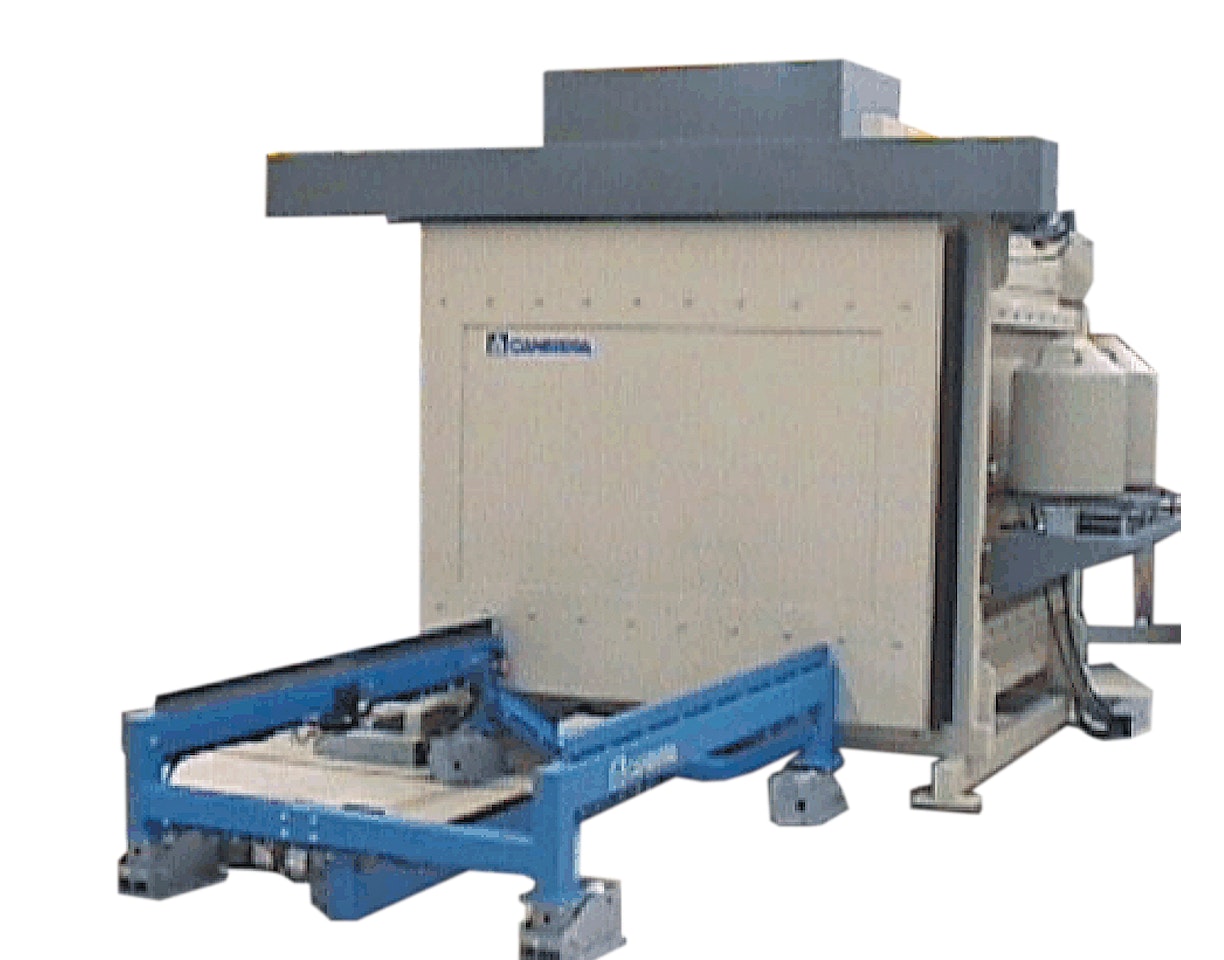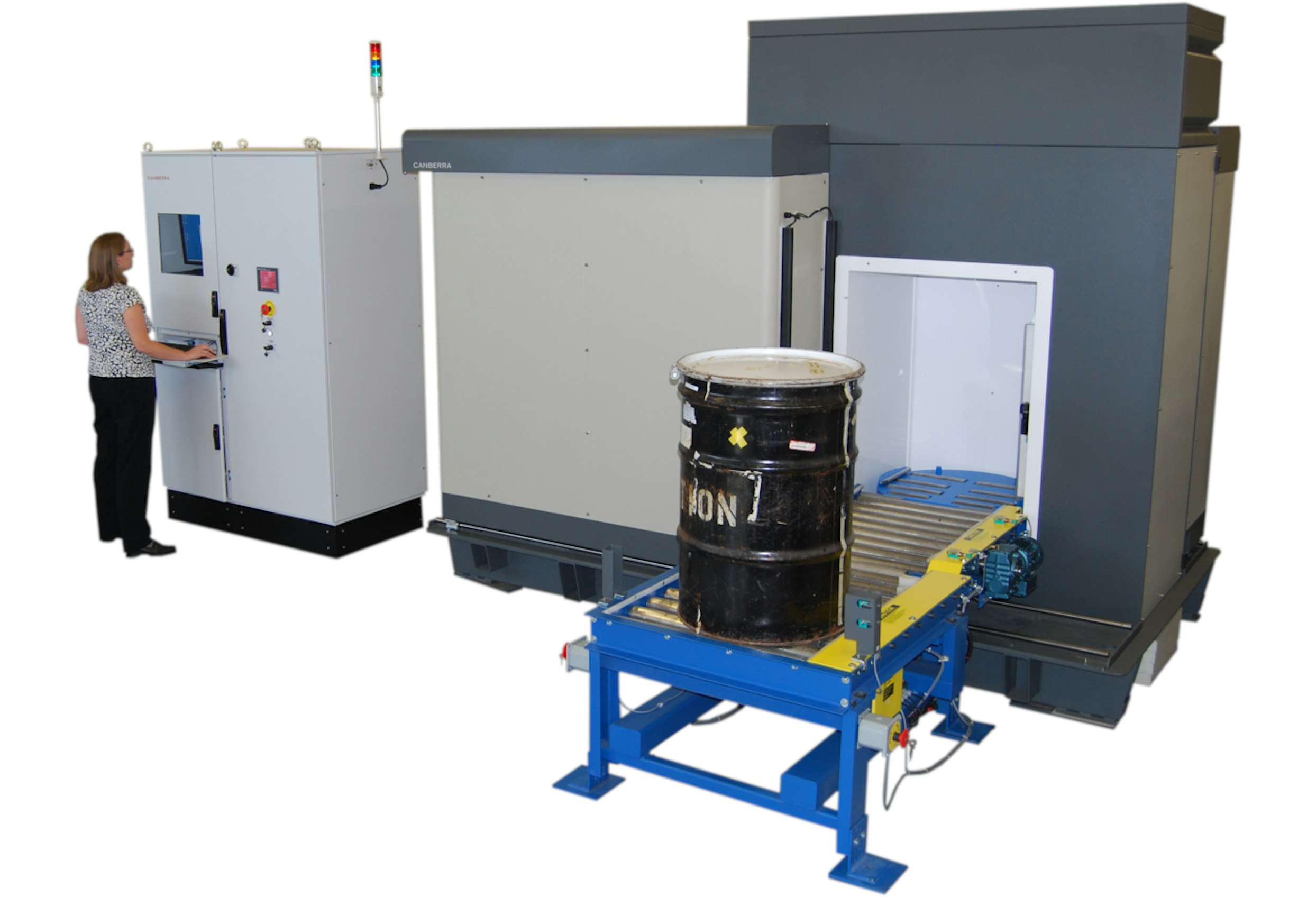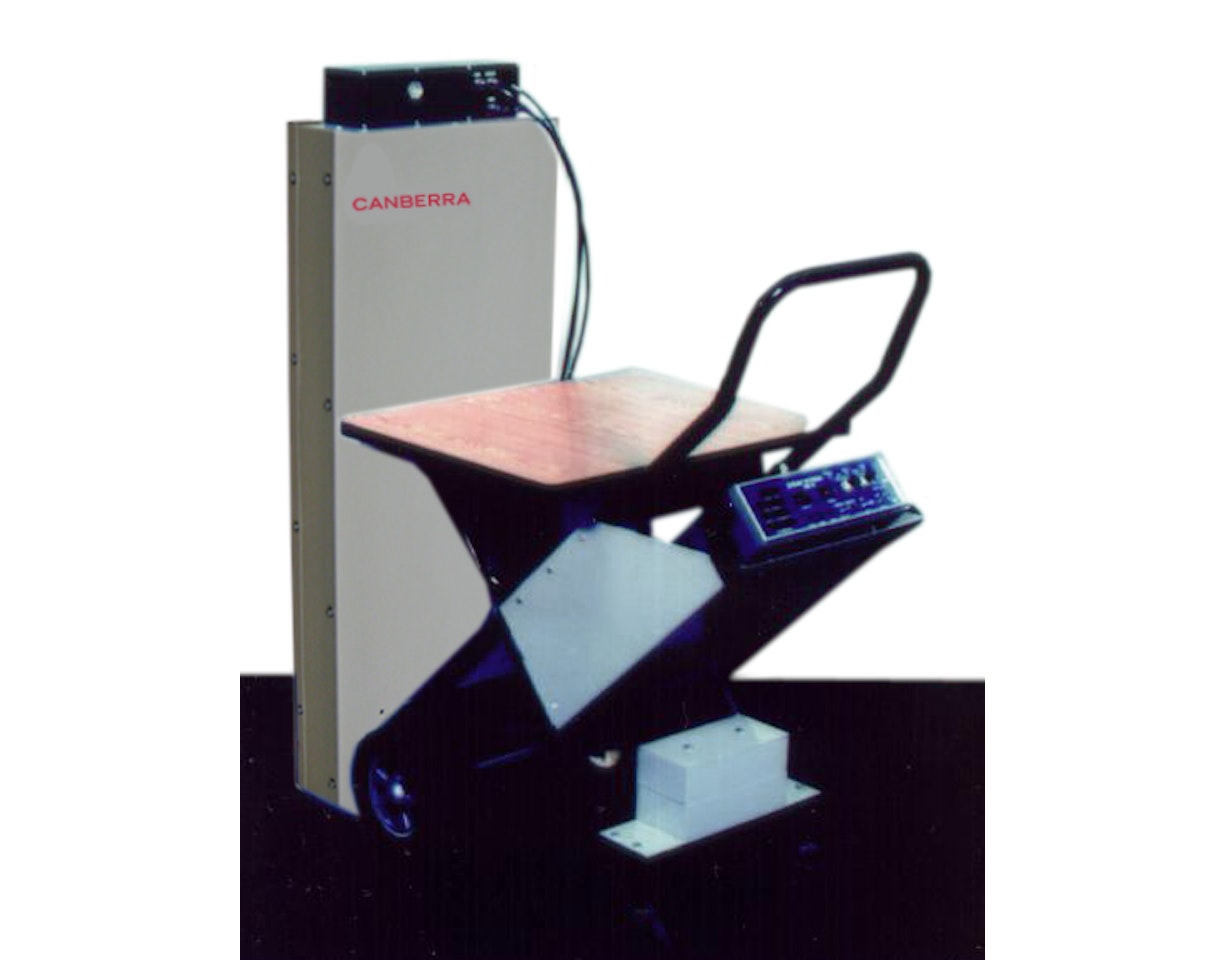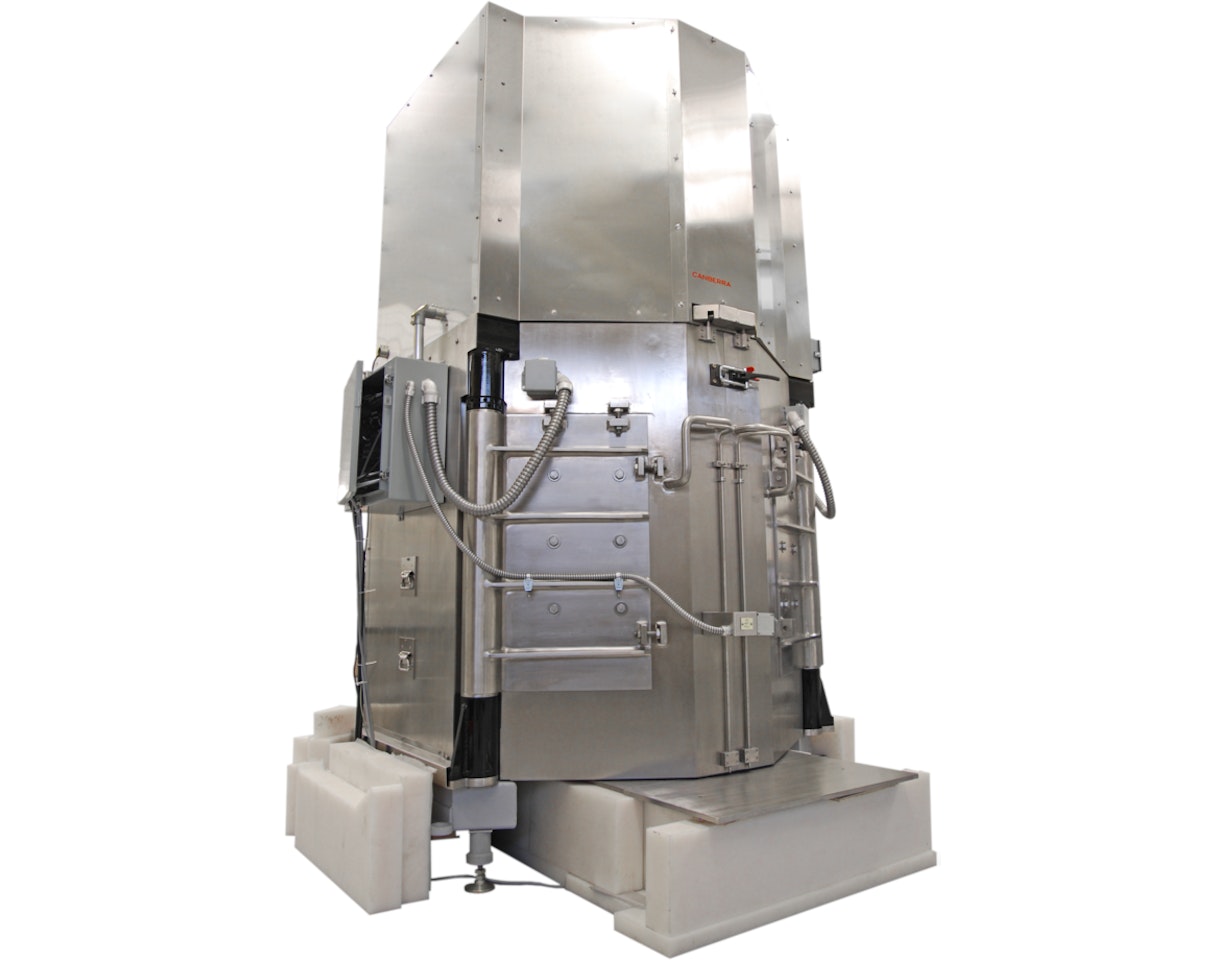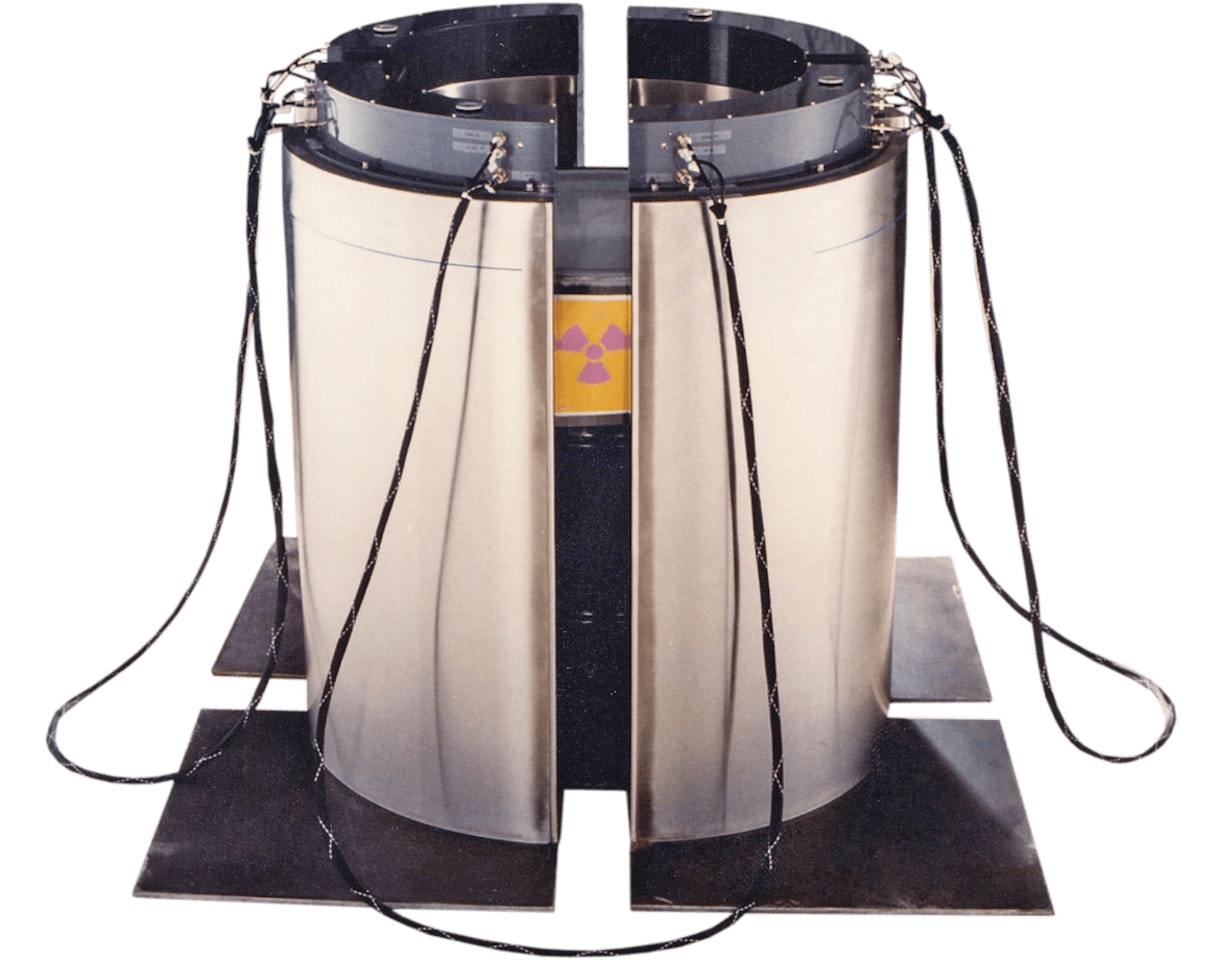Description
The HENC High Efficiency Neutron Counter represents the ultimate in the Mirion family of passive neutron coincidence counters. Combining a detection efficiency of over 30% with increased shielding to reduce backgrounds, the HENC system is designed to assay 208 liter (55 gallon) drums to detection levels on the order of 1.6 mg of 240Pu-effective in a 1000 second count time. With the addition of enhanced correction and analysis techniques such as Add-A-Source and multiplicity counting the HENC is also an extremely accurate assay system.
Components of the proposed system include the neutron counter with 3He detectors, Amptek-based fast preamplifier/discriminator circuit boards (Model JAB-01), coincidence electronics, computer hardware, and application software. The turnkey system is designed for ease of operation and minimal maintenance.
Spontaneous fission neutrons from the even isotopes of plutonium will be measured using passive neutron coincidence or multiplicity counting techniques. The neutron counter consists of a high-density polyethylene (HDPE) moderator with 3He tubes embedded in the HDPE on all six sides of the counter with optimal spacing for maximum detector efficiency.
The software converts the corrected count rate to 240Pu-effective (combination of 238Pu, 240Pu, and 242Pu) and calculates the total measurement uncertainty.
The counter's neutron detection efficiency is 30% for 252Cf neutrons emitted in the center of the assay cavity. The spatial response of the counter is uniform. Variations from the mean efficiency are less than 3% for totals (non-coincident neutrons). An optional drum rotator provides additional smoothing of non uniformities in response due to the rectangular shape of the assay chamber.
It is possible to reduce the matrix effects by the use of the Add-A-Source (AAS) technique. An illustration of the AAS measurement is shown in Figure 1. The AAS introduces a small 252Cf source into the sample chamber at the end of the passive assay and compares this result with an empty chamber value. The impact of the waste matrix is evaluated from this relative measurement and an appropriate correction is applied. The 252Cf source for the AAS correction is stored above the counter in a HDPE shield. Measurements indicate that the presence of the 252Cf source has no significant impact on the background readings. The source positioning is controlled by the software.
